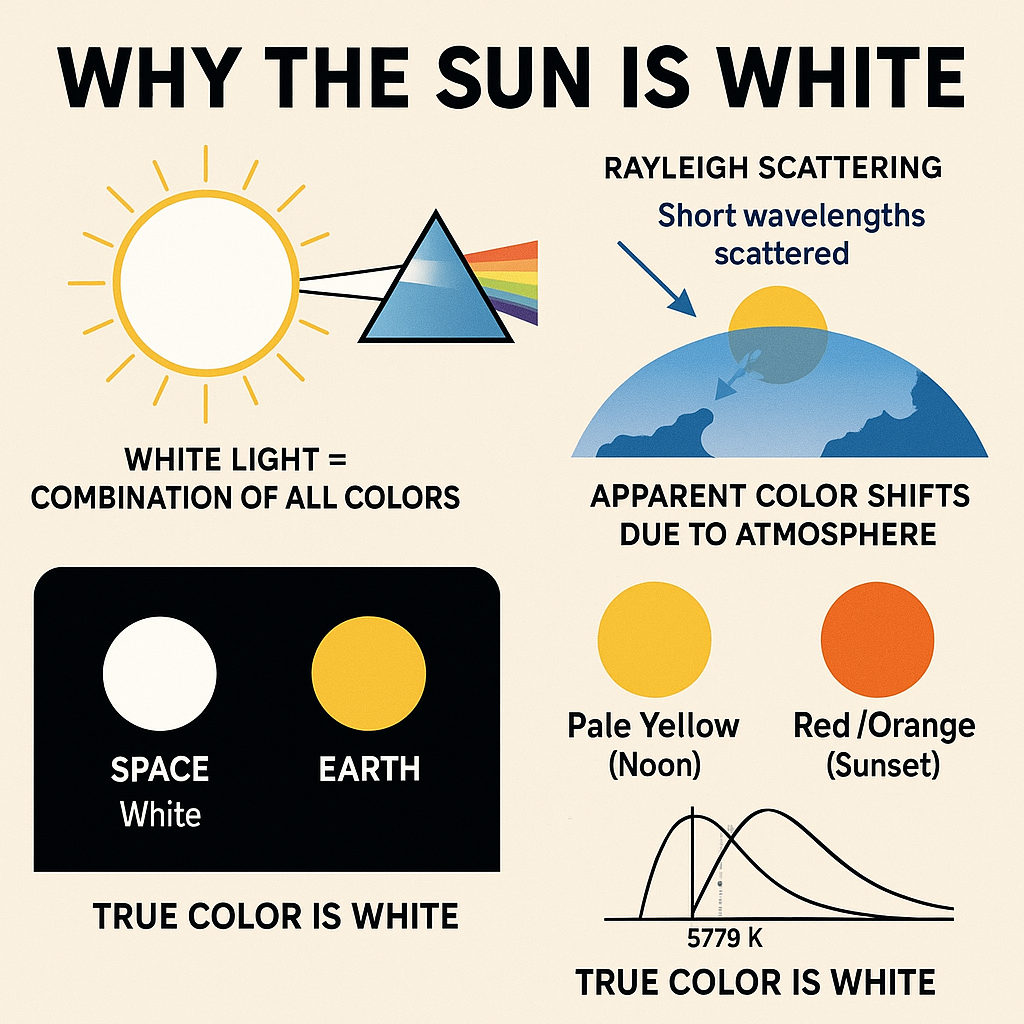




















Courses
Q.
What Color Is the Sun?
see full answer
High-Paying Jobs That Even AI Can’t Replace — Through JEE/NEET
(Unlock A.I Detailed Solution for FREE)
Best Courses for You

JEE

NEET

Foundation JEE

Foundation NEET

CBSE
Detailed Solution
It might seem like an easy question "what color is the Sun?" Most people would instinctively say yellow, especially since we often draw it that way as children. However, the reality is far more fascinating and scientifically complex. The Sun's actual color is white, and this article will explain why we perceive it differently and what its true color means from an astronomical and physical standpoint.
A Spectrum of Colors
Sunlight, or solar radiation, contains all visible wavelengths of light—from violet to red. When combined, these colors form white light. This was proven by Isaac Newton when he passed sunlight through a prism and demonstrated that white light could be separated into a full spectrum.
Thus, from a physics standpoint, the Sun emits white light. It does not emit more yellow or red light than other visible wavelengths it emits them all nearly equally.
Why Does the Sun Look Yellow from Earth?
Although the Sun emits white light, it often appears yellow, orange, or even red when viewed from Earth. This happens due to a phenomenon called Rayleigh scattering, which occurs as sunlight passes through the Earth’s atmosphere.
Important Factors:
- Atmospheric Scattering: Shorter wavelengths (blue and violet) are scattered more by the molecules in our atmosphere.
- Filtering Effect: The remaining longer wavelengths (red, orange, yellow) dominate what we perceive, making the Sun appear yellow during the day and reddish at sunrise or sunset.
- Viewing Conditions: Dust, pollution, and humidity further alter the perception of the Sun’s color.
In the vacuum of space, astronauts see the Sun as pure white, confirming its true color.
What Color Is the Sun Scientifically?
The Sun’s surface temperature is about 5,778 Kelvin, and using Planck’s law and blackbody radiation curves, this temperature corresponds to white light.
Stars are classified by spectral types, and the Sun is a G2V (yellow dwarf) star. The term “yellow dwarf” is a bit misleading it’s more about spectral classification than actual color.
"The Sun is white"
Misconceptions about the Sun’s Color
Many people believe the Sun is:
- Yellow: Due to how it looks from Earth.
- Orange or Red: Often seen during sunrise or sunset.
- Blue: Sometimes falsely portrayed in edited photos.
These are perceptual illusions caused by atmospheric effects, not by the Sun's true color.
The Sun in Space vs. The Sun on Earth
| Environment | Perceived Color of the Sun |
| Earth (Noon) | Pale Yellow |
| Earth (Sunset) | Red or Orange |
| Space (Vacuum) | Pure White |
| Scientific Model | White (blackbody emission) |
A White Giant in the Sky
Despite centuries of art and culture depicting it in yellow or orange, the Sun is a blazing ball of white light. Its apparent color changes are due to the interaction of its light with our atmosphere, not because its intrinsic color varies.
Understanding the true color of the Sun isn’t just trivia it reveals fundamental truths about physics, astronomy, and atmospheric science. The next time you draw a yellow Sun, remember: science says it’s white you just see it through a colorful lens.
courses
No courses found
Ready to Test Your Skills?
Check your Performance Today with our Free Mock Test used by Toppers!
Take Free Test




